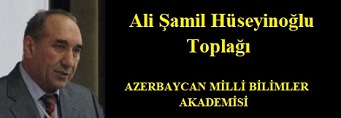Turuz masraflarını karşılaya bilmemiz için yeni yılda Turuza destek olmak için [email protected] ile irtibata geçin.
Bağışlarınızı bu E-postaya bildirin: [email protected]
Bank kart bilgileri:
6104 3373 5031 8547
Iran Millet Bank
Finding the Roots of Nowrooz in History - Farhad Javadi
Introduction:
The process of completion and development of the natural laws has a much slower acceleration in comparison to those in human, social laws and after so many centuries and millennia has preserved its stability. Primitive human beings who were extremely dependent on nature used to adapt themselves with geographical conditions, i. e. living in places which were inhabitable. Then, they battled against the brutal natural laws and subjugated them using their power and tact. They started forming some water canals so as to develop farming lands among which we can mention Azarbaijan, Mesopotamia, the current Karun River’s area, Indu-Punjab. According to the scientific reports and researches, Azarbaijan’s lands were among the primary and important centers of farming and animal husbandry. About 8000 or 9000 years ago, farming started in lands of Azarbaijan and has continued its development onward. Native people met their economic needs through farming; but in addition to earning a livelihood, they were more inclined to furnish and develop agriculture and farming industry. With advancements in the field of farming, native people established the agricultural civilization and, for the first time, they replaced the simple plough with plough with cows. Even did they develop advanced irrigating system.
Wishing for winning more income and facilities, they resisted the vicissitudes of life with strong willpower. Gradually, their interests and relationship with Eastern countries increased. In line with these changes, the same conditions were detectable in other inhabitable lands like Mesopotamia, Iran, Transoxiana, Arya, Caspian Sea’s seashores, Black Sea, Mediterranean Sea, and the current Caucasus. Concurrent with these evolutional movements, the first holidays and feasts started to be constituted by ancient Turks and they were granted to the world; among which Nowrooz and Mehregan in Iranian Plateau can be enumerated. Iranian Plateau consisted of: the current Iran, Mesopotamia, Azerbaijan, Transoxiana, Khorasan, Turkmenistan, Pakistan and Afghanistan. We cannot restrict the deep roots of Nowrooz to some limited lands; rather, we have to evaluate it with having an extensive and holistic view. In the present work, it is proved that Nowrooz is a legacy coming from the ancient Turks, different clans and people with agglutinative language, who were the owners of advanced agricultural and sedentary-based civilization. Nowrooz is a huge discovery which ancient Turks granted to the humankind. Undoubtedly, these ancient Turks, including the residents of Azarbaijan had a key role in the emergence and development of this national holiday and feast. It is highly probable that the history of this holiday goes back to 20000 to 30000 years before Christ.
In some studies, we are informed that the emergence of Nowrooz is related to 30000 years B. C. emerging in Babylon. According to Zoroastrian annuals, the emergence of this holiday’s age is 4000 years more than those studies. What can be found in these statements is that the early trace of Nowrooz goes back to so many years ago. According to the writings of some Roman and Greek authors and historians, Zarathustra lived in the sixth millennium B. C. (8000 years ago). Zarathustra, the great, wise and long-sighted man elevated to a semi-God status among the ancient Turks and turned into a legendary figure. Nowrooz was very popular in Zarathustra’s lifetime among countries such as Azarbaijan, Iran, Middle Asia, Afghanistan, Pakistan and some other nations and it used to be held at its best with high elegance. From Zarathustra’s time onward, Nowrooz has spread widely and has preserved its primitive nature with the passage of time which is due to its union with the ancient Turks’ ancestors. Nowrooz as a national and ancient holiday is indicative of the equality of the length of day and night. In terms of its content and all-inclusiveness, Nowrooz is the best and the most important national holiday, standing at the peak of all holidays.
Nowrooz is the auspicious, rejoice-making element throughout the Turks’ history for thousands of years and has developed and remained throughout the history and never has it become separate from the Turks. Nowrooz, inseparable companion of the Turks, is a testifier and expresser of the grandeur of struggle for life. Nowrooz is the symbol of purity, brightness, and innocence. It is the world of peace, love of life, zenith of moralities, and spiritual wealth. I have endeavored to find the roots of this significant, national day and to bring out its roots from the depths of history and to identify its major discoverers and nurturers based upon documents, facts and authentic narrations. As much as possible, I have tried to rely on the sayings and writings of both Persian-speaking and foreign historians and scholars. Also, the reliance upon the Turk authors and scholars’ views has been shunned so as to avoid misunderstanding. The problem of finding the roots of Nowrooz and introducing its discoverers is one of the dark points and eclipses of history.
Farhad Javadi (Abdullah Oghlu)
Oroumieh, July 2012
| Finding the Roots of Nowrooz in History - DOCX | |||
|---|---|---|---|
|
خواندن
دانلود
برای ادامه حیات توروز، کمک کنید |
|||
| حجم: 170.5 KB | نوع فایل : Docx | دیده شده : 712 | گزارش خرابی |
| Finding the Roots of Nowrooz in History - PDF | |||
|---|---|---|---|
|
خواندن
دانلود
برای ادامه حیات توروز، کمک کنید |
|||
| حجم: 749.54 KB | نوع فایل : Pdf | دیده شده : 792 | گزارش خرابی |







